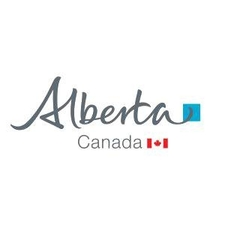RIPARIAN-MANAGEMENT-AREA
Type of resources
Topics
Keywords
Contact for the resource
Provided by
Formats
Representation types
Update frequencies
status
-

The Riparian Area Assessment of the North Saskatchewan and Battle River Watersheds project focused on assessing riparian habitat along lake, creek, stream and river shorelines. The majority of the shorelines of interest were located within the NSR or Battle River watersheds. however, an additional shoreline was also assessed within municipalities that partially intersect, but are not completely contained within, either the NSR or Battle River watersheds. In addition to assessing new shorelines, an important component of this project was compiling data for shorelines that had been previously assessed in central Alberta using the same assessment methodology. these data were combined together to create a single, seamless riparian assessment dataset that contains ~35,400 km of lake, river, stream, and creek shoreline. This dataset was created for the North Saskatchewan and Battle River Watershed Planning and Advisory Councils, as a part of a large scale Riparian Area Assessment in Alberta.
-

The Riparian Area Assessment of the Upper, Mid and Lower Pembina River Watersheds project focused on assessing riparian habitat along lake, creek, stream and river shorelines. This dataset was created for the Athabasca Watershed Council as a part of a large scale riparian area assessment in Alberta. The overall goal of this project was to quantify and characterize the intactness of riparian management areas in the Pembina River watersheds, and to further assess pressure on riparian system function by evaluating land use and land cover within local catchments immediately adjacent to the waterbodies included in this study.
-

The Riparian Area Assessment of the Buffalo, Kneehills, Little Red Deer and Threehills, Michichi, Raven, and Rosebud Sub Watersheds project focused on assessing riparian habitat along lake, creek, stream and river shorelines. This dataset was created for the Red Deer River Watershed Alliance as a part of a large scale riparian area assessment in Alberta. The overall goal of this project was to quantify and characterize the intactness of riparian management areas in the Red Deer River watersheds. Riparian habitat was assessed along approximately 5,285 km of shoreline within the Buffalo, Kneehills, Little Red Deer, and Threehills subwatersheds. Riparian habitat was also assessed along approximately 4,031 km of shoreline as part of Michichi, Raven and Rosebud Sub Watersheds. These seven subwatersheds cover an area of ~22,904 km2 and are located in central Alberta, roughly between Ponoka and Airdrie.
-

The Riparian Areas Assessment of the Swan River, Lesser Slave River and Tributaries, West Prairie, and Lesser Slave Lake focused on assessing riparian habitat along creek, stream and river shorelines. This dataset was created for the Lesser Slave Watershed Council as a part of a large scale riparian area assessment in Alberta. The overall goal of this project was to quantify and characterize the riparian habitat management in the Lesser Slave Lake watershed by assessing riparian areas along approximately 2536 km of shoreline. This study created a recent land cover layer within 50 m of selected shorelines and use this layer to assess the intactness of riparian areas along major waterbodies. It also provided guidance on how the results from the intactness assessments can be used to target conservation and restoration efforts within along the shorelines that were assessed as part of the study.
 Arctic SDI catalogue
Arctic SDI catalogue